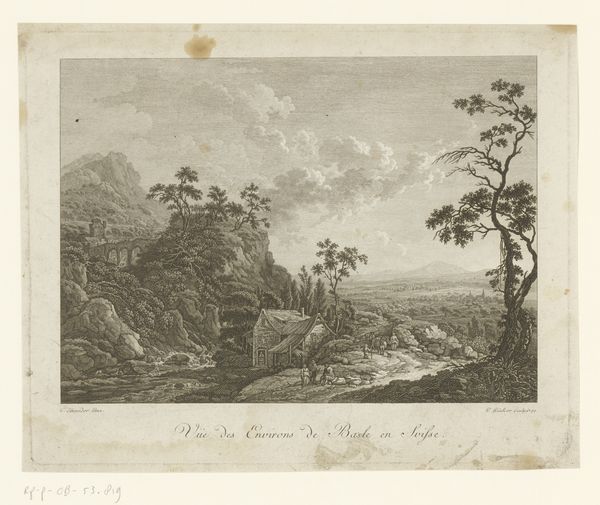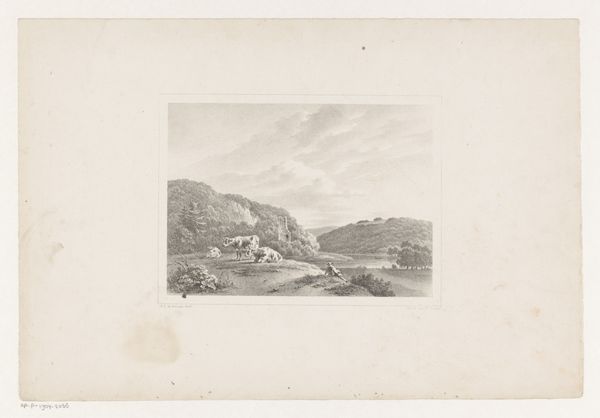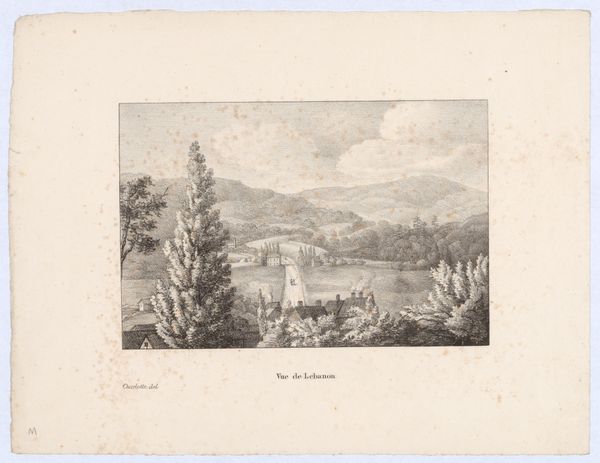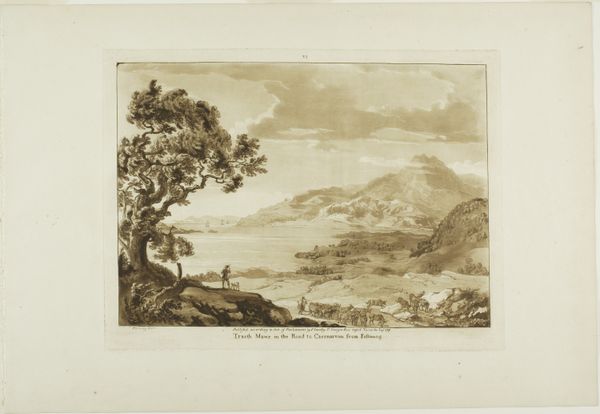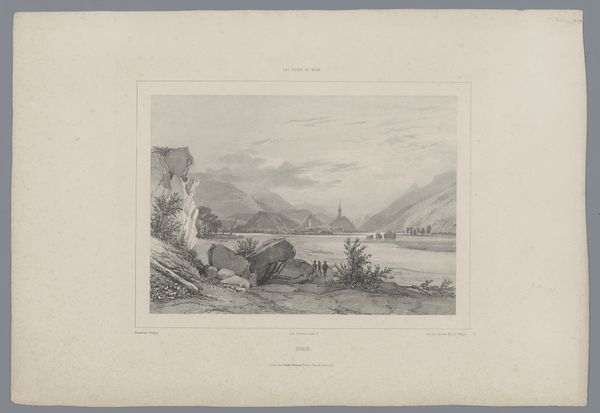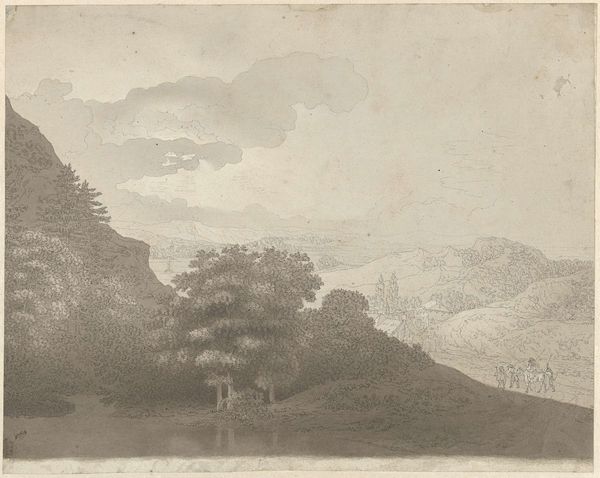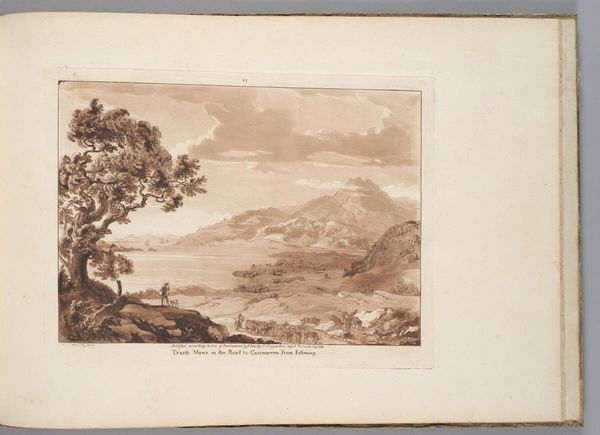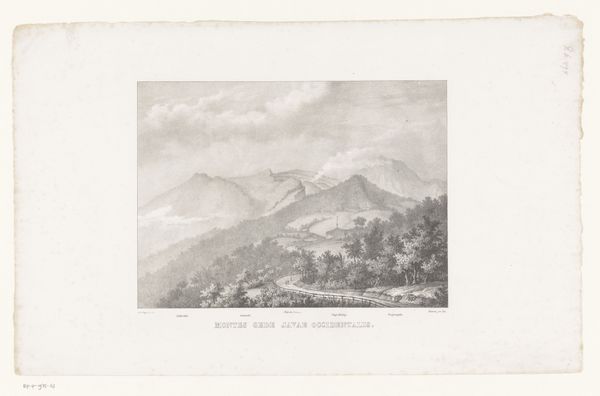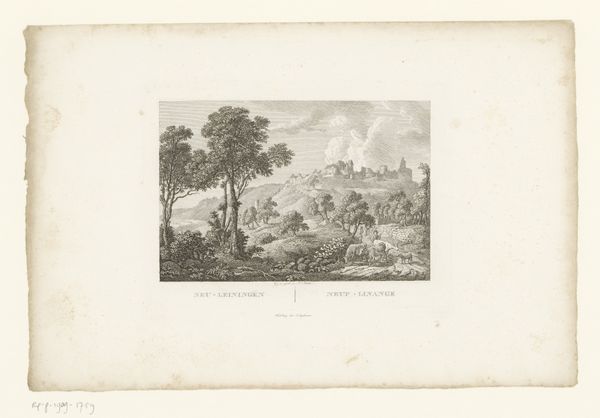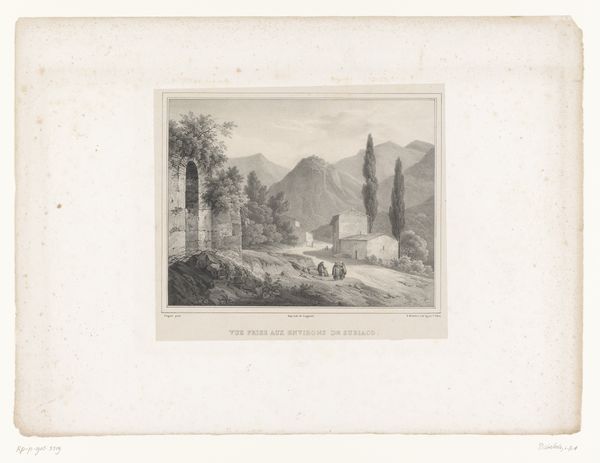
drawing, print, engraving
#
drawing
# print
#
landscape
#
romanticism
#
engraving
Dimensions: height 189 mm, width 237 mm
Copyright: Rijks Museum: Open Domain
Curator: Jakob Wilhelm Christian Roux’s 1822 engraving, "Gezicht op Bacharach," captures a serene view now held in the Rijksmuseum. Editor: Immediately, I’m struck by its composition; the layering of the landscape, leading the eye from the foreground hill down to the quiet town nestled along the river. There's an undeniable stillness. Curator: Indeed. The use of engraving allows for incredible detail. We see that the artist is attentive to the landscape's subtle changes and undulations and depicts the working town as harmonious with nature. Look at the rendering of light and shadow, see how he has used small lines to great effect! Editor: And consider the material implications! The labor-intensive process of engraving, etching lines into a metal plate. What statements can we derive regarding the access to fine materials and the state of workshops for artisan printmakers? Curator: Certainly. But the choice of viewpoint must be considered, as well. It creates a visual hierarchy. Our position is outside, almost on the pastoral margins. It invokes Romantic ideals by framing mankind within a more majestic nature. Editor: Agreed, and perhaps an element of idealization too? Notice the sheep dotting the hillside in the foreground. Consider that their presence, through sheep husbandry, sustains the surrounding populace. We might think about how landscape depictions support socio-economic constructs. Curator: A valid point! The artist chose to show a quaint and idyllic landscape, possibly downplaying harsher realities. Consider that engravings like these played a part in promoting the Romantic notion of landscape. Editor: Ultimately, the scene captures more than just Bacharach—it evokes ideas about the harmony between man and nature, and perhaps the social and material status quo that supports that representation. Curator: In conclusion, Roux’s print encapsulates a moment frozen in time; however, it also hints at both the artistic and social currents that defined its creation and its continuing cultural significance.
Comments
No comments
Be the first to comment and join the conversation on the ultimate creative platform.



